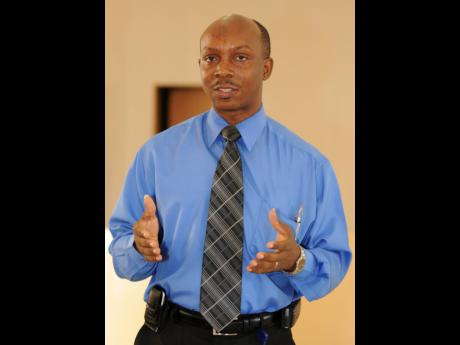NWC to revise distribution plan to ease water woes
Facing a plethora of challenges caused by breaks and limited inflows, the National Water Commission (NWC) is to widen its structured rationalisation of the commodity to boost distribution efforts, particularly in the Corporate Area and sections of St Catherine.
Residents in several communities have been complaining about a lack of water, sometimes for periods lasting up to a week.
Communications manager at the NWC, Charles Buchanan, told The Gleaner that less-than-adequate inflows through the recommissioned 12-inch bypass along Mandela Highway and the decreasing volume of stored water at the Mona Reservoir have exacerbated the problem.
Distribution
He said the agency is looking at ways to make the commodity available in some of the most affected areas by diverting water from some well-served areas.
“The primary thing has to be how we can shift water from some areas to service those more affected, because there are areas that are well serviced, and so we are trying to make sure, as much as humanly possible, to move the water around to enable some reasonable level of equity in the distributed supply,” said Buchanan.
He said that the commissioned 1.5-kilometre, 12-inch bypass pipeline, which was laid along the northern side of Mandela Highway to bypass the break on the 18-inch main, has been getting just about 2.7 million gallons of water per day from the Ferry system that had been out entirely since December.
Buchanan explained that normal flows on the 12-inch line would normally be about 5.5 million gallon, adding that the NWC currently receives roughly 2.7 million gallons per day on some days, less than a half of normal inflows. He said that the bypass is a temporary fix as work is ongoing to get the 18-inch main back into service.
“The compounding issue is that had other things being equal, and Mona, Hermitage and Constant Spring had been operating at normal levels, we would now be seeing a significant improvement in the issues we encountered in the first three months of the year [when within two weeks, the NWC reported several major breaks along Mandela Highway and Constant Spring Road].
“The problem is that while we have made an improvement from this side, it has come at the same time that there is a worsening of the inflows coming into our facilities due to drought conditions.”
So at the moment, we are receiving about four million gallons of water into the Hermitage Dam each day from a combination of three different sources, when we need to be getting somewhere in the region of 10 to 12 million gallons,” Buchanan noted.
In addition, the Hope River, which supplies the Hope Filter Plant to go into the Mona Reservoir, is only pushing two million gallons, which, Buchanan said, is not even enough to fully operate the Hope Filter Plant, which needs about six million gallons per day.
In April, Minister without Portfolio in the Ministry of Economic Growth and Job Creation Pearnel Charles Jr announced at a Red Stripe-initiated Water Forum in Kingston, a raft of multimillion-dollar projects to bolster Jamaica’s water-sustainability efforts, beginning with a US$42.5 million, five-year programme that will target Kingston and St Andrew.

